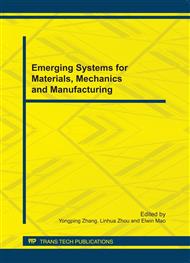p.145
p.150
p.156
p.161
p.165
p.170
p.174
p.181
p.187
Experimental Study on the Process of the Three-Dimensional Rock Crack Growth Influenced by the Pre-Crack Profile Geometry
Abstract:
The difference of the pre-crack profile geometry could have a certain influence on the surface crack growth in rock materials. In this paper, an experimental study on the failure process of rock specimen with a non-penetrated crack in two different profiles is performed. Profile of the pre-crack on the specimen type I is trapezoidal and profile of the pre-crack on the specimen type II is arc. The surface crack growth of the two types of specimen is analyzed and compared in detail by using the digital speckle correlation measurement (DSCM) techniques and the virtual extensometer (VE) based on DSCM. The results indicate that the extension mode of the main crack on the two types of specimen depends on the pre-crack profiles of different geometry. The cross-section with continuous profile (specimen I) has a fixed propagation direction and a much higher growth speed compared to the cross-section with discontinuous profile (specimen II).
Info:
Periodical:
Pages:
165-169
Citation:
Online since:
October 2011
Authors:
Price:
Сopyright:
© 2012 Trans Tech Publications Ltd. All Rights Reserved
Share:
Citation:


